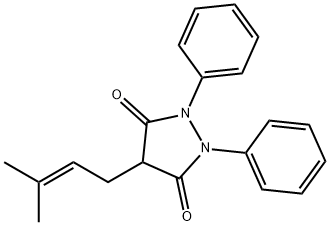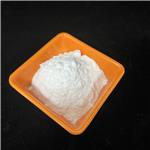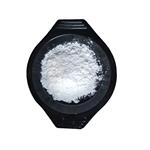Zepelin,De Angeli,Italy,1972
Feprazone is a anti-inflammatory agent used in the management of inflammatory or degenerative joint diseases.
ChEBI: Feprazone is an organic molecular entity.
43.8 g (0.237 mol) of hydrazobenzene are added to a solution of sodium
ethylate obtained by dissolving 6.55 g (0.285 mol) of sodium in 125 ml of
anhydrous ethanol. 59.6 g (0.2612 mol) of diethyl 3-methyl-2-butenyl malonate are then added, with stirring, at the reflux temperature.
The reaction mixture is refluxed for 1 hour, then the solvent is slowly distilled
off, the distillation being completed in vacuo. The solid residue so obtained is
dissolved in 400 ml of water and washed with ether. The solution is acidified
with 10% HCl and the 1,2-diphenyl-3,5-dioxo-4-(3'-methyl-2'-butenyl)-
pyrazolidine which separates is purified by crystallization from ethanol (MP
155°C to 156°C).
Bentudor;Brotazona;Cocresol;Da 2370;Danfenona;Feniprenazone;Fepramole;Golaman;Impremial;Metrazone;Naoven;Nazona;Nessazona;Prenakes;Rangozona;Represil;Solielin;Tbrien;Vapesin;Zontal;Zoontal.
World Health Organization (WHO)
Feprazone, a pyrazolone derivative with antiinflammatory,
analgesic and antipyretic activity, was introduced in 1978 for the treatment of
rheumatic disorders. As it is structurally related to phenylbutazone it is subjected
to rigorously restricted indications by some national regulatory authorities. See
WHO comment for phenylbutazone. WHO has been informed that to date feprazone
is only available in some 7 countries.



